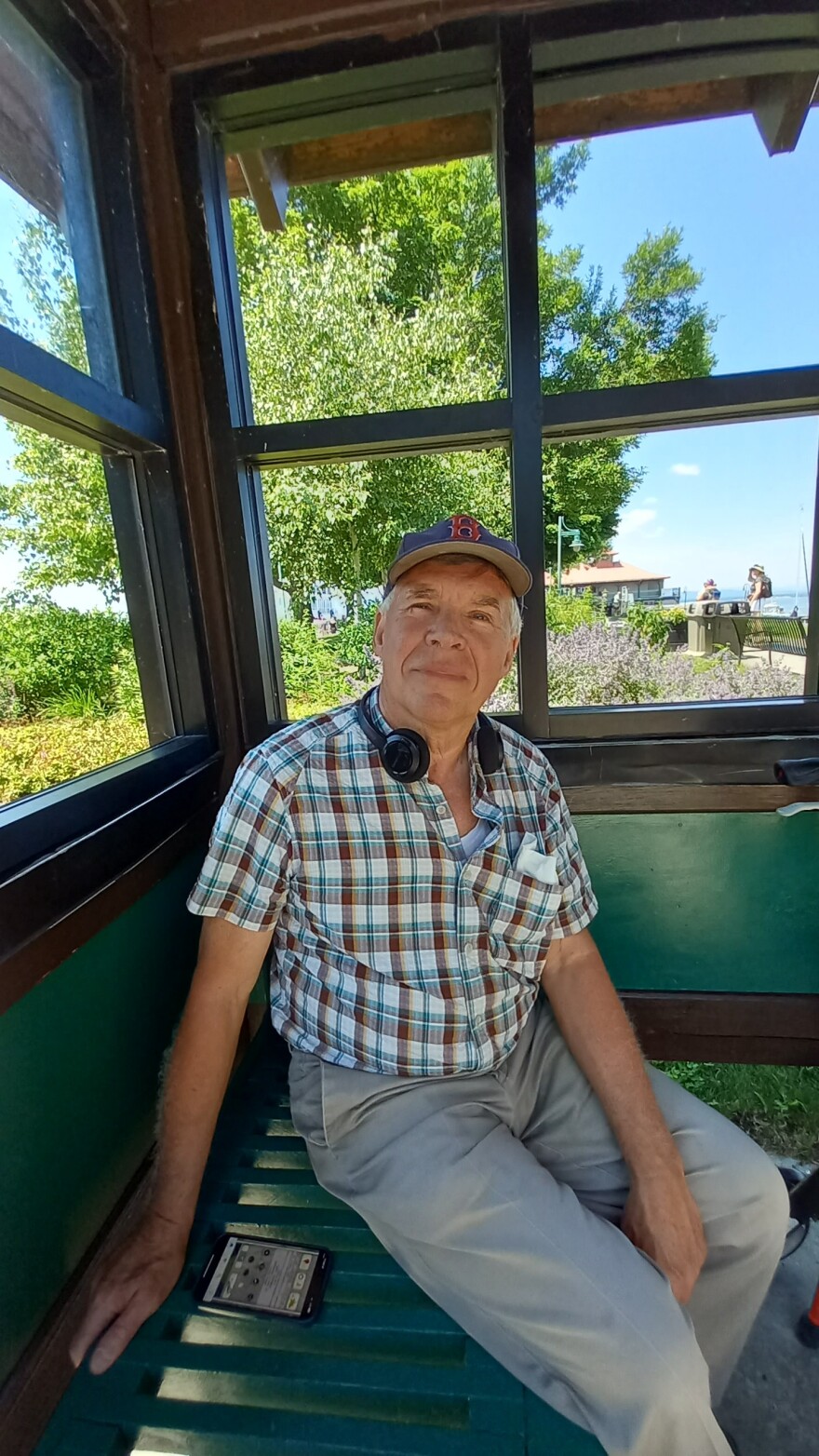Earlier this week a small crowd of 30 or so people gathered on Burlington’s waterfront.
They were there to get the first glimpse of a new sign, which was created specifically to improve accessibility for those who are blind or visually impaired. It is the first in Vermont's Queen City, according to organizers.
It provides information about well-known locations like the Burlington Community Boathouse Marina, the lake, the ECHO Leahy Center for Lake Champlain and the A_Dog Skatepark through the use of raised images, along with Braille lettering, contrasting colors, text and photo images.
Steve Pouliot, executive director of the Vermont Association for the Blind and Visually Impaired (VABVI), one of the collaborating groups that worked on this project, praised the effort.
"This will provide an enriching, inclusive experience for everyone who visits the waterfront, regardless of what their level of sensory access might be," he said during Tuesday's dedication ceremony. "So we hope that this will be a model that could and should be emulated across the city and even our state."
The association worked with Burlington Parks, Recreation and Waterfront for more than 2 years on the project.
The groups said they solicited feedback from many different people with impaired vision or other differing abilities. Cindy Wight, director of the parks department, said she hopes the sign will benefit everyone.
"If you're coming down to waterfront park for the first time and you've never been here, you don't know that there's a fishing pier all the way out on the other end of the park," she said.
Tom Frank, of Milton, agreed. Frank is blind and first began to lose his vision at 21.

"You don't know what you don't know. You can’t see it," he said. "So when you're checking out the map and going, ‘Here, OK so what's that sticking up here?' Oh well that's a wharf! Well I didn't know there were wharfs down that way."
He said for some people who are blind or have vision impairment, simply physically orienting themselves and determining distances can be a challenge.
"It's very difficult to determine how far something is away. You just don't have any perspective," Frank said. "So if a relief map like this one, you can look at it and say, 'Well, I know where this is and I know how long it takes me to walk here. Oh, it'll take me so much longer to get down to this point.'”
The new map also alerts visitors of certain terrain types. That's especially helpful for people like Nate Besio, who is a power chair user. The Colchester resident is also the chair of Burlington's Advisory Committee on Accessibility.
Besio said both the parks department and VABVI listened to input from the disabled community during the creation of the tactile sign.
"This is really a good collaboration, this tactile sign," he said. "It was really something where people from both sides got together. We got our feedback from people with disabilities, we were able to arrange people to come down and provide feedback on a lot of different aspects of it. So it was really an exciting collaborative effort.”
More services to assist blind and visually impaired visitors who might use the sign are coming soon including a scannable QR code that will unlock additional information. There’s also a plan to film an interpreter using ASL to translate the signage info, and more tactile signs are in the planning stages.
Have questions, comments or tips? Send us a message.





